Tight Hips? Try This 15-Minute Stretching Routine
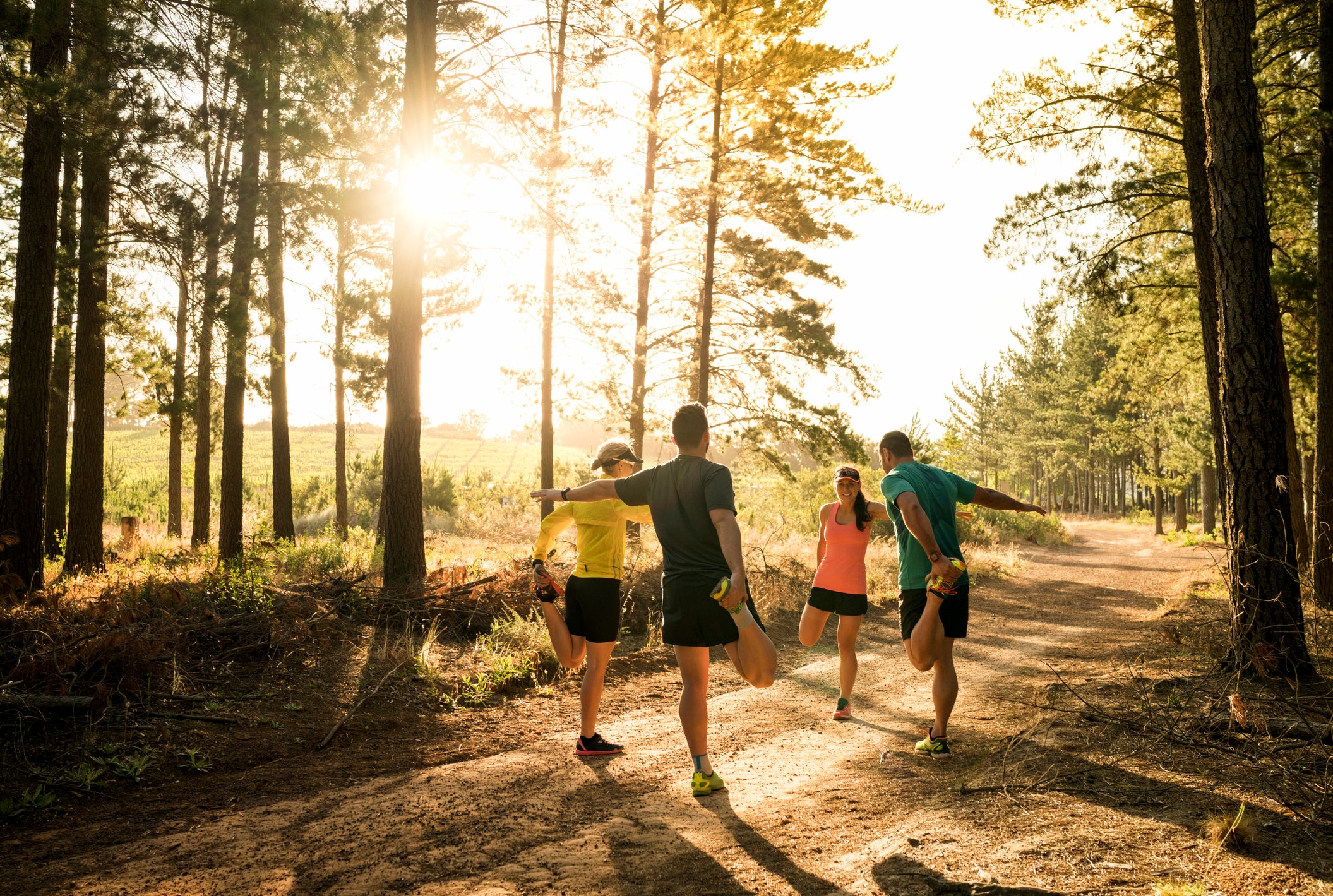
A photo of male and female friends stretching legs before jogging. Full length of people wearing sportswear on dirt road. They are exercising in nature.
Over the past year, many people have been away from the office because of the coronavirus pandemic. Yet that doesn’t mean the epidemic of bad backs and tight hips, caused by hours of sitting hunched over at a computer screen, has disappeared.
In fact, with couches, beds, kitchen-counter bar-stool seats and all manner of sometimes awkward home seating turning into our makeshift offices, our hip flexors are under more stress than ever. A simple stretching routine can help mitigate that issue.
“Since sitting constricts the muscles, it can make them extremely tight, especially if you’re not incorporating hip stretches into your routine,” says Kelly Von Schleis, certified health coach, personal trainer and IT health-care consultant. “Over the years, I’ve spent the majority of my workdays at a computer and my hips have faced the consequences. Tight hip flexors also can make it harder for your glutes to activate — since they’re opposing muscle groups, when one is really tight, the other lengthens, and when a muscle is more lengthened than it should be, it takes away some of its ability to contract.”
These aches and pains don’t just affect you in the course of your day, they can derail you in the gym, as well. “When your glutes are in this compromised state, it can force surrounding muscles to do more work than they should, making your workouts less efficient and even increasing your risk of injury,” Von Schleis explains.
To counteract your long days of sitting, try a regular stretching routine. In just 15 minutes, anywhere from two to five days a week — whether at the end of a workout or all on its own — the following lower-body stretching program can help relieve discomfort, decrease tightness and increase mobility. “As a bonus, these stretches also can help reduce stress and provide for healthy deep breathing practice,” she adds.
Equipment required: Exercise mat; yoga blocks, a yoga strap or light resistance band is optional.
Suggested warm-up: Do the following circuit of bodyweight moves with no equipment for one minute each: air squat, lunge to plank (alternating to the left and right), mountain climber, alternating reverse lunge and jumping jacks.
Workout overview: Although it may not seem necessary during a stretching session, a proper warm-up is still vital to overall success. “You want to get blood flowing to the tissues before doing any deep stretching,” Von Schleis says. “A stretching session can ask a lot of your muscles, like any dynamic exercise. You also may find it easier to go deeper in some stretches once the muscles are warmed up.” After your five-minute warm-up, you’ll go right into 10 minutes of static hold stretches — doing each for two minutes, with 30- to 60-second sets within each of those two-minute time frames as shown below. “I like to end this stretching series with a couple of minutes of foam rolling on my IT band and hips,” Von Schleis adds.
Kelly Von Schleis’ Lower-Body Limber-Up
Perform each stretch for two minutes total, with minimal rest in between the listed holds.
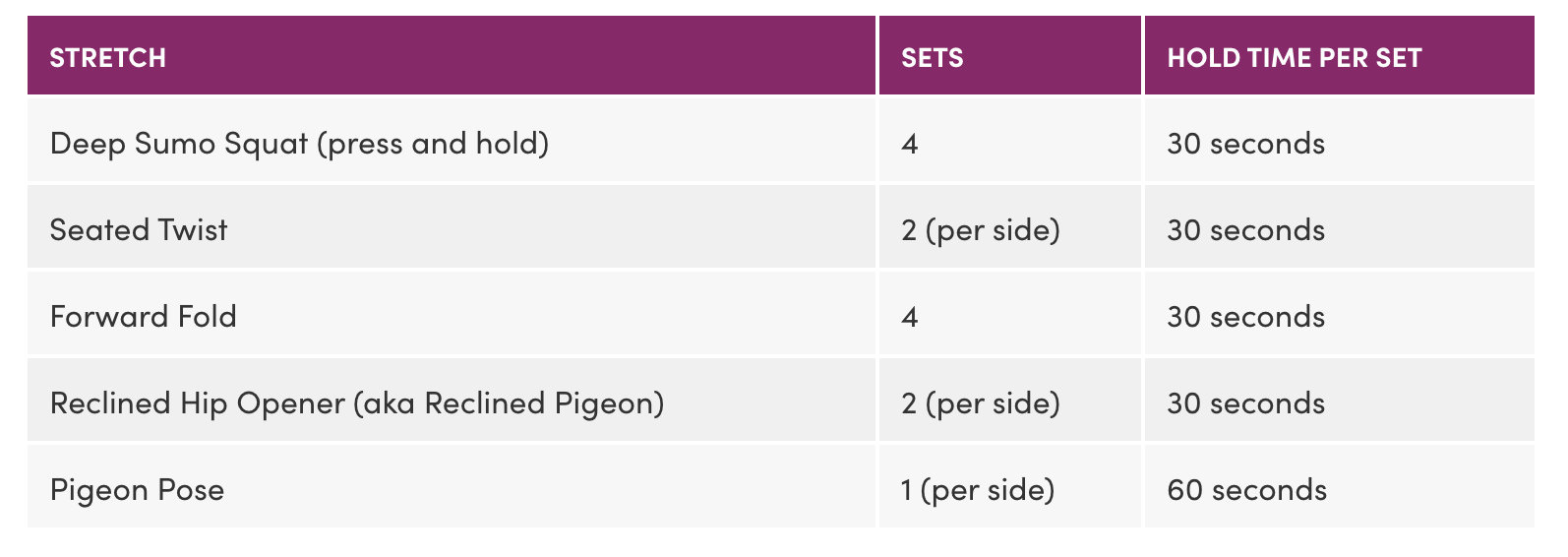
Exercises
Deep Sumo Squat (press and hold)
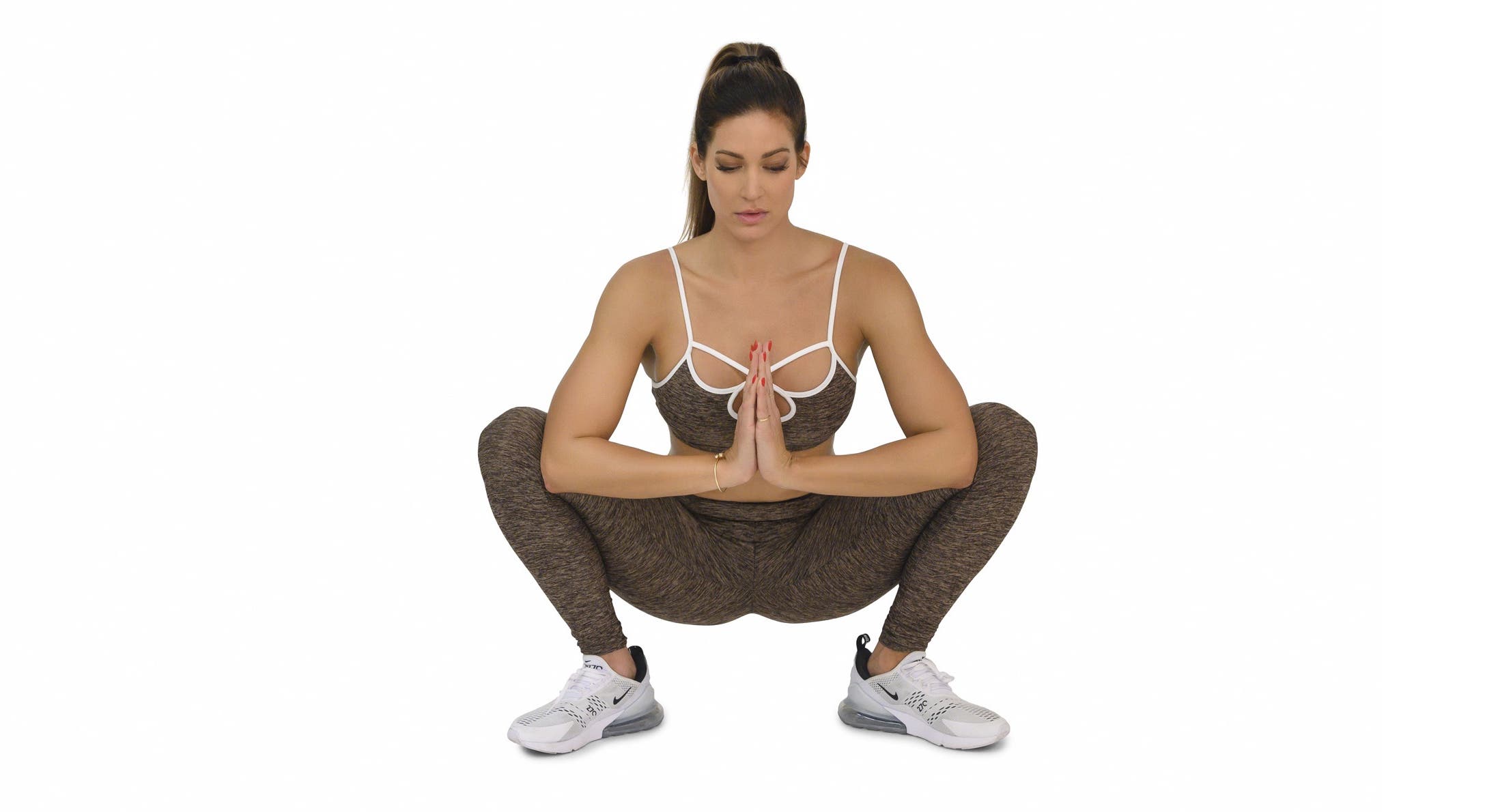
How-To: First, lower yourself slowly into a squat and back up five times, with your feet abducted slightly and your toes pointed outward. On the fifth descent, hold the deep squat, placing your elbows inside your knees and, with your palms together, apply some pressure to the inside of your thighs with your elbows. Maintain a neutral spine, head up and eyes focused forward, and hold the squat 30 seconds.
Kelly’s Pointers: “At the end of the 30-second hold, I like to straighten the legs into a hamstring stretch fold — where my body is folded over, hinging at my hips — and do a few slow reps moving from the sumo squat to the straight leg fold. Another option at the bottom position of the sumo squat is to put one hand on the floor in front of you for balance and stretch your other arm back behind you at a 90-degree angle, looking to the ceiling, for an additional twisting spinal stretch.”
Seated Twist
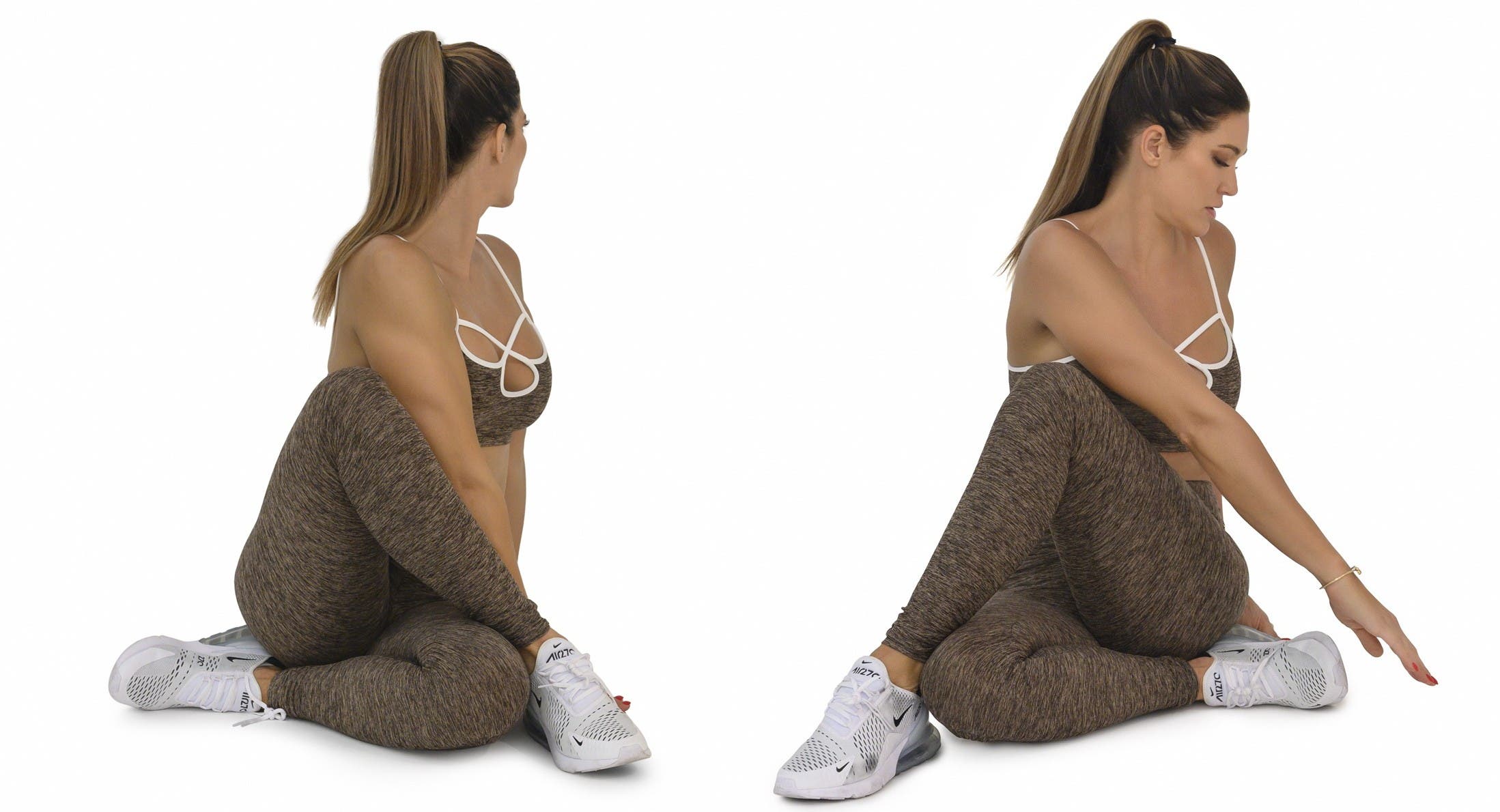
How-To: Sit on the floor, your legs straight out in front of you. Bend your knees to bring your right foot close to your left buttock and your left foot flat on the floor outside your right thigh. Sit tall, inhale and place your left hand behind you to serve as a tripod. As you exhale, bring your right elbow across your body and place it outside your left knee. On each inhale, think about “sitting up taller,” and on each exhale, twist deeper. Hold this stretch for five deep breaths, then switch sides and repeat.
Kelly’s Pointers: “I tell my clients that twists are a great way to ‘wring out the bad stuff.’ Really focus on your deep inhales and exhales as you twist into the stretch. If you feel any pain in your knees when you do these, try sitting on an elevated surface like a yoga block, but discontinue if the pain persists. Keep in mind, pregnant women should avoid twists altogether.”
Forward Fold
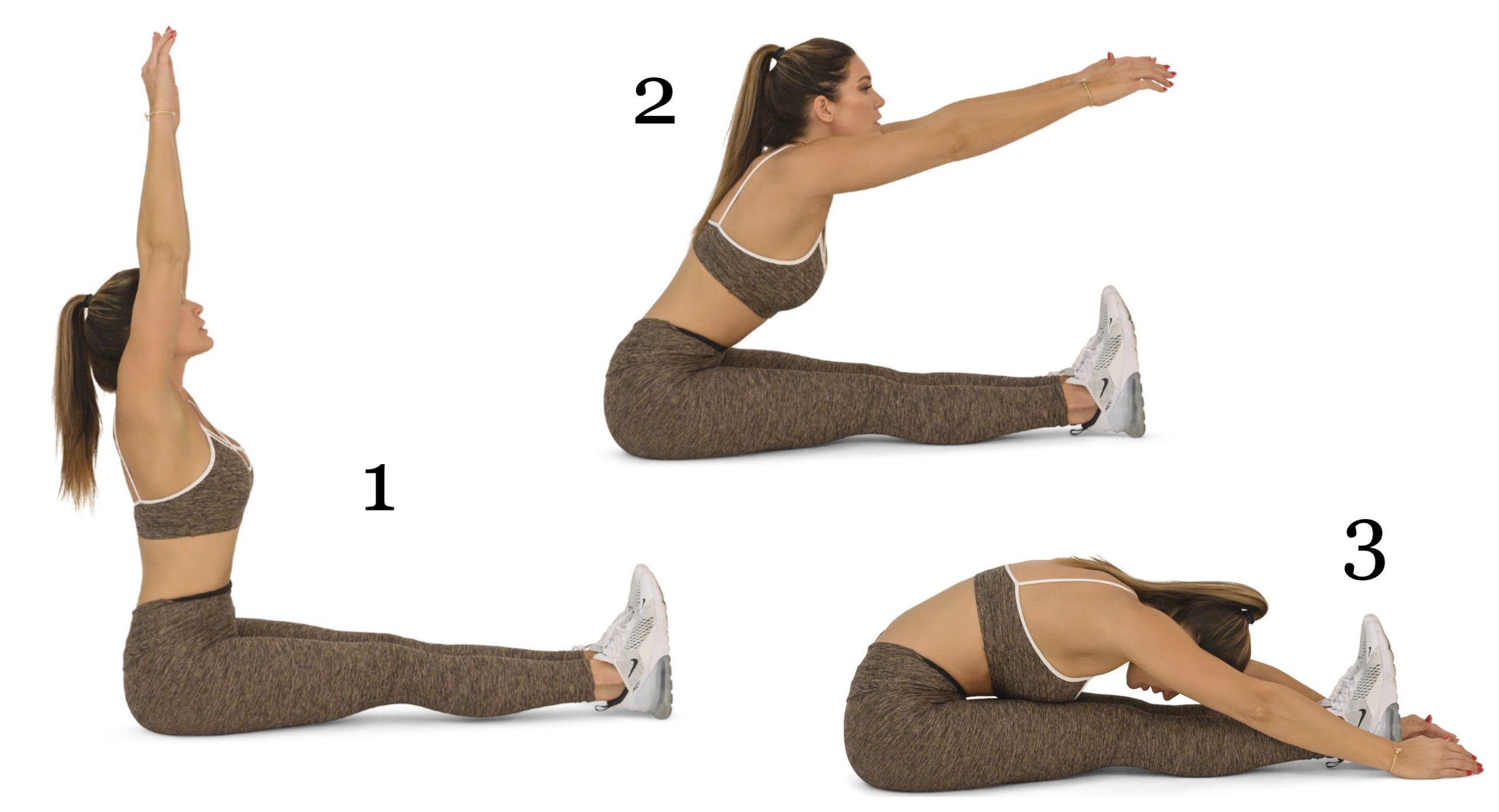
How-To: Sit with both legs straight in front of you and your feet touching. Bring your arms straight out to your sides and up overhead, reaching toward the ceiling. Inhale and feel your spine lengthening; as you exhale, hinge at your hips to bend your upper body forward. Imagine your pelvis as a bowl of water that is tipping forward and lengthen your spine with each inhale. As you exhale, deepen your forward fold while keeping the natural extension of your spine. Take hold of your ankles or shins — whichever you can reach — to hold the pose.
Kelly’s Pointers: “This pose stretches the areas that help open up your hips and is an excellent stretch for anyone with tight hamstrings, especially runners. The forward fold is considered to be a calming pose, so the slow inhales as you rise and exhale as you fold will help make this pose your go-to to relieve stress and even improve your mood. About halfway through the hold, I like to take a deep inhale and deepen the stretch. If you have difficulty reaching all the way to your toes, position a yoga strap or resistance band around your feet and grasp it with both hands. If you need to, you also may bend your knees enough so you can reach your feet with your hands.”
Reclined Hip Opener (aka Reclined Pigeon)
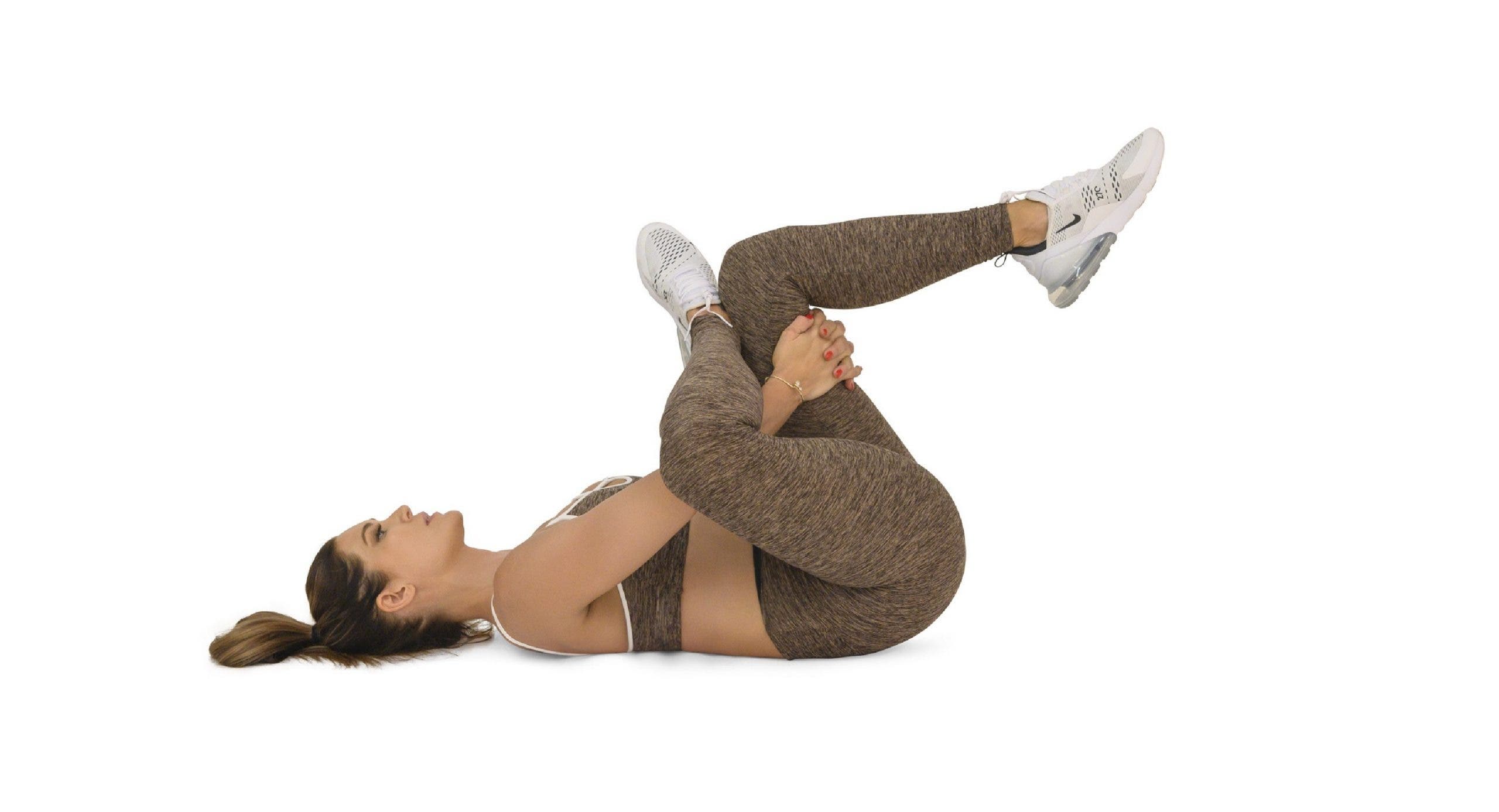
How-To: Lie on your back with your knees bent and feet flat on the floor. Your spine can be neutral — you do not need to flatten your back. Bend your right knee until that thigh is perpendicular to the floor. Bring your left knee up, rotating your left leg outward at the hip so that you can rest your left ankle on your right thigh just above your knee. Place your right hand to the outside of your right thigh and thread your left hand through the opening your crossed left leg has made. Grasp your hands behind your right thigh. Press your left thigh open with your left elbow as you simultaneously pull your right thigh toward your chest with your hands. You will feel a good stretch along the outside of your left hip. Breathe deeply into the stretch and hold 30 seconds, repeating the sequence once more before switching to the other side.
Kelly’s Pointers: “This is one of the best exercises for the outer hip. You can experiment with the intensity of the stretch. Always be sure to keep the shoulders and neck relaxed during this pose. To deepen the stretch, bring your forehead to the knee and enjoy.”
Pigeon Pose
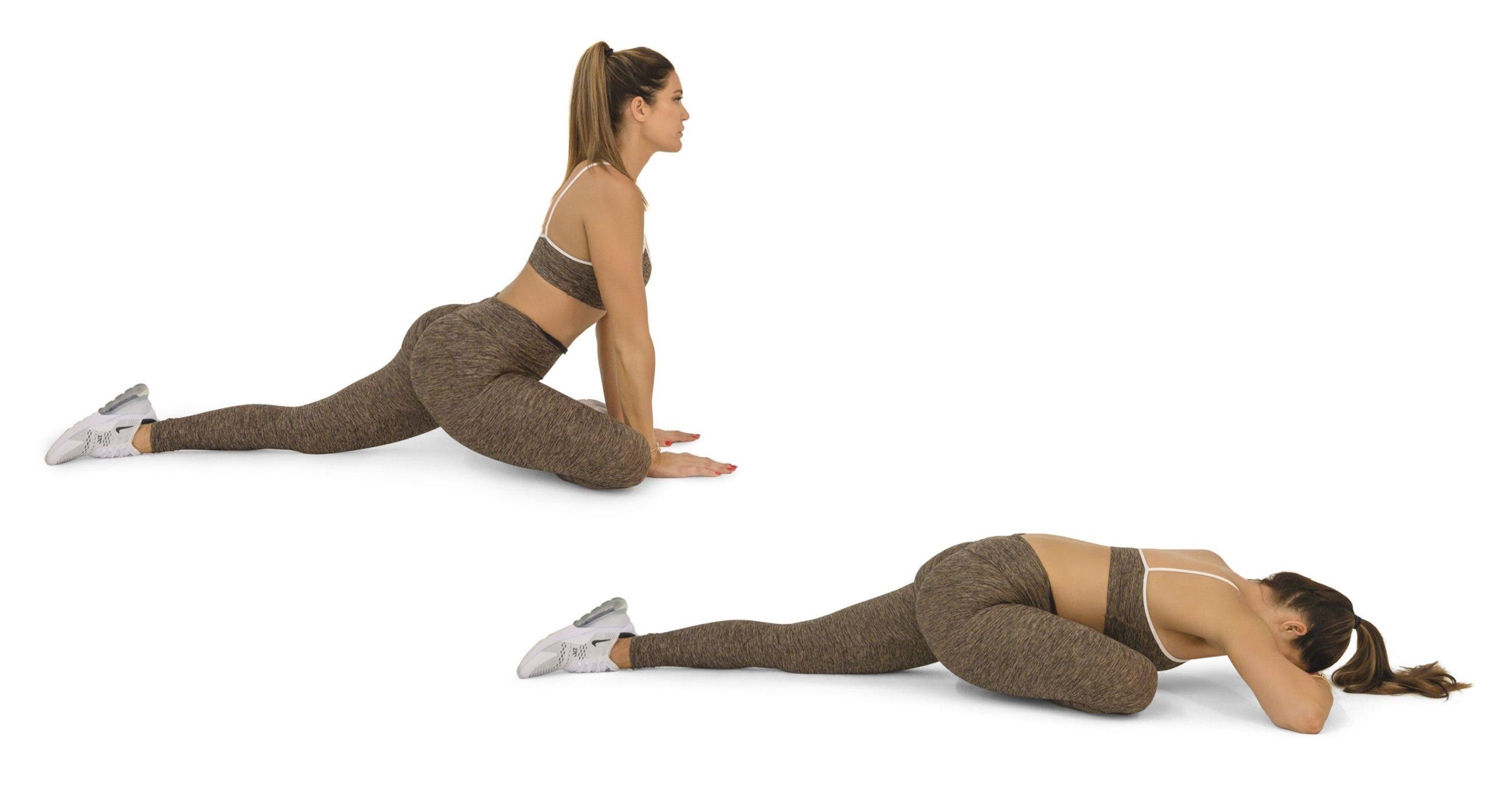
How-To: Start in a runner’s lunge with your right leg forward, your right knee directly aligned over your right ankle and your back leg straight. Walk your right foot over toward your left hand, then drop your right shin and thigh to the floor, making sure to keep your right knee in line with your right hip. Allow your left leg to rest on the floor, with the top of your left foot facing down. Take a moment to square your hips to the front of the room. Hold this position or hinge at your hips and lower your torso toward the floor, allowing your head to rest on your forearms. Hold 30 seconds to one minute, then repeat the sequence on the opposite side.
Kelly’s Pointers: “Pigeon pose is the king of hip openers and provides a deep, juicy stretch for the glutes and thighs. If this pose hurts your knees or feels uncomfortable, stick with the reclined hip opener, or try lying on your back with your knees crossed on top of each other and just hold onto your feet and gently pull. Oftentimes in yoga, this pose is held for two minutes or longer, so feel free to enjoy an extended stretch if it’s feeling just right!”